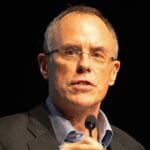Latest News

Via Satellite archive image.
Thanks to Starlink and OneWeb, broadband from the sky dominates the view of the satellite data business for both the industry and the public. It’s all about hundreds of Mbps crossing from terminals to Low-Earth Orbit (LEO) satellites to gateways and back again.
That makes it easy to forget the power of small bursts of data delivered over satellite. The billions of narrowband, GPS and IoT terminals in operation around the world have an impact that far outstrips their bandwidth. That’s good news for humanity, because small data is playing a big role in helping us control pollution and to manage and begin to reverse the toll of climate change.
From Tracking Animals to Tracking Icebergs
Location tracking is a prime example of that power. In the fight to protect endangered species, tracking collars and tags report the location and movement of animals. The bursts of date generate information over time that reveals feeding and migration patterns, tracks the impact of human beings on their territory and helps fight poaching.
Sewer systems designed decades ago can overflow in heavy rain, pouring raw sewage into surrounding waters. Detectors connected by satellite provide operators with critical real-time data to identify overflows so they can be stopped.
The melting of the world’s ice caps is a major cause of concern. Scientists tracking the movement of icebergs need a low-cost solution that can be dropped onto bergs by drone and replaced frequently as they are lost to the sea. Small satellite trackers have a long enough life to be useful and are cheap enough to replace easily.
Out to sea, autonomous vessels are roaming the oceans. They gather weather data, identify illegal fishing and watch for signs of climate change. The information they gain is vital to science, to the environment and our safety.
Robots also roam beneath the waves. They are called autonomous underwater vehicles, and they monitor the health of the oceans, map the sea floor and search for wreckage. And how does all this data get from the oceans to the land? By short bursts of data over satellite.
Hidden Contributions
The reach of satellite IoT is already remarkable and looks set to grow. As electric vehicle charging stations multiply, satellite data is becoming critical to maintaining communications between the stations and the charging management systems.
Management platforms for truck fleets equipped with sensors and a satellite data transmitter boost efficiency enough to cut thousands of tons of CO2 output from tailpipes. Sensors in farmers’ fields track soil moisture and crop condition in ways that permit sharp reductions in water use and fertilizers, whose production generates greenhouse gases. Similar sensors in forests monitor weather and soil for conditions that lead to wildfires.
Most remarkable is the opportunity to combine small bits of data to provide actionable intelligence. Getting most out of solar panels requires data on temperature, energy output and tilt angle. Put them together, and managers can rapidly identify underperforming or malfunctioning panels that need a maintenance call. The benefits of such analytics go much further. When analyzed against historical weather data, this information can significantly improve the ability of alternative energy providers to predict power output and integrate more effectively with the traditional grid.
The battle to manage, mitigate and ultimately reverse climate change is enormous. According recent estimates, the world will need to invest $275 trillion to reach net-zero emissions by 2050, requiring a $3.5 trillion increase per year in climate investment. And that does nothing to turn back the clock on climate change already baked into our environment.
The only way to get there – and to turn our economy net-negative – is for the climate change battle to become an enormous business opportunity, helped along the way by smart governmental action. However we do it, you can be sure that small bursts of data racing from ground to sky and back again, will have a role to play.
 Robert Bell is executive director of Space & Satellite Professionals International. SSPI produces the Better Satellite World campaign, which dramatizes the immense contributions of space and satellite to life on Earth. More at www.bettersateliteworld.com.
Robert Bell is executive director of Space & Satellite Professionals International. SSPI produces the Better Satellite World campaign, which dramatizes the immense contributions of space and satellite to life on Earth. More at www.bettersateliteworld.com.
Get the latest Via Satellite news!
Subscribe Now